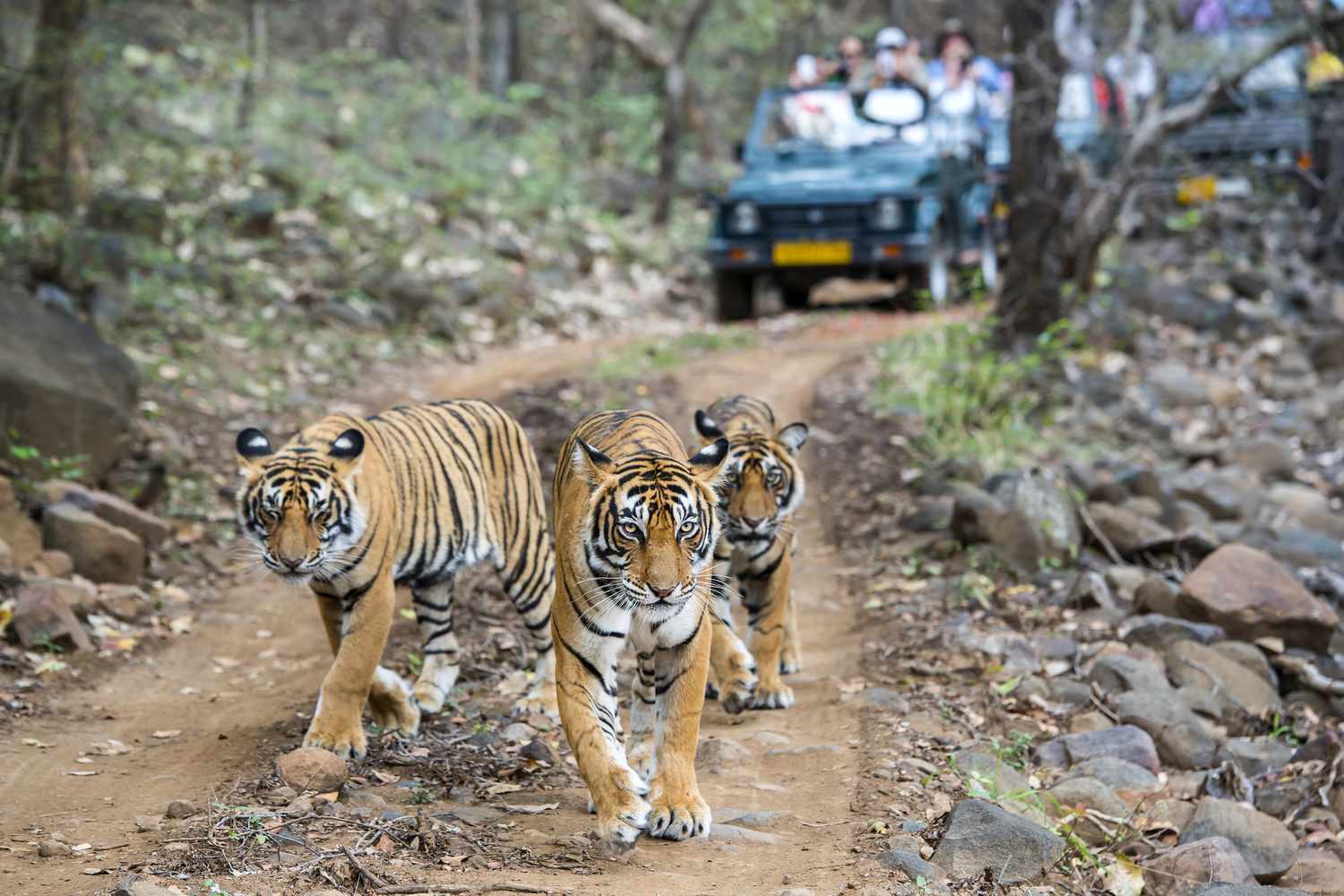Rajasthan, the land of kings, is renowned for its majestic forts, vibrant culture, and sweeping desert landscapes. However, its lesser-known but equally captivating feature lies in its diverse wildlife. Embarking on a Rajasthan Wildlife Safari Tour is an unparalleled experience, offering nature enthusiasts and adventurers a glimpse into the rich flora and fauna of this iconic Indian state. Let’s explore everything you need to know for an unforgettable safari journey in Rajasthan.
Top Wildlife Sanctuaries and National Parks in Rajasthan
Rajasthan boasts an impressive network of national parks and wildlife sanctuaries, each with unique characteristics. Here’s a closer look:
Ranthambore National Park
Ranthambore is synonymous with tiger sightings. Located in Sawai Madhopur, this park is famed for its thriving population of Bengal tigers. The picturesque ruins scattered across the park add a touch of history to your wildlife exploration. Apart from tigers, Ranthambore is home to leopards, sloth bears, and a variety of birds, making it a prime destination for both wildlife enthusiasts and photographers.
Sariska Tiger Reserve
Situated in the Alwar district, Sariska offers a unique blend of dry deciduous forests, grasslands, and rocky terrains. Known for its tiger population, this reserve also harbors leopards, hyenas, and numerous bird species. Sariska’s proximity to Delhi and Jaipur makes it an excellent choice for weekend getaways.
Keoladeo National Park
Formerly known as Bharatpur Bird Sanctuary, Keoladeo is a UNESCO World Heritage Site and a paradise for bird lovers. Migratory species, including Siberian cranes and painted storks, flock here during the winter months. The sanctuary’s wetlands also host a variety of reptiles and small mammals.
Desert National Park
Located near Jaisalmer, this park highlights the unique ecosystem of the Thar Desert. Despite its arid environment, the park is home to the endangered Great Indian Bustard, foxes, desert cats, and a plethora of reptiles.
Mount Abu Wildlife Sanctuary
This sanctuary offers a refreshing change with its green hills and cooler climate. Leopards, sambars, and jungle cats roam these forests, while the sanctuary’s plant diversity attracts botanists and nature enthusiasts alike.
Best Time to Visit Rajasthan for a Wildlife Safari
Rajasthan’s wildlife parks are best visited during the cooler months, from October to March. The pleasant weather makes safaris comfortable, and animals are more active during these months, increasing your chances of sightings. Winter is particularly ideal for birdwatching in places like Keoladeo National Park, while tiger spotting peaks in early mornings and late afternoons at Ranthambore and Sariska.
Planning Your Safari: Tips for a Memorable Experience
Choose the Right Safari Package
Selecting the right safari package tailored to your interests is crucial. Whether you’re looking for a thrilling tiger safari or a serene birdwatching experience, trusted operators such as a travel agency in Rajasthan can help customize your itinerary. Booking in advance ensures you secure entry to popular parks and reserve the best guides.
Dress and Gear
Light, breathable clothing in neutral tones is recommended to blend with the surroundings. Comfortable walking shoes, sunscreen, and hats are essentials. Don’t forget your binoculars and camera to capture stunning wildlife moments.
Timing and Patience
Wildlife spotting requires patience. Early mornings and evenings are prime times for animal activity. Guides are invaluable for tracking elusive species, so listen to their insights for the best sightings.
Respect the Environment
While on safari, prioritize eco-friendly practices. Avoid littering, refrain from disturbing wildlife, and maintain silence to preserve the natural habitat. Sustainable tourism ensures that these sanctuaries thrive for generations to come.
Wildlife Beyond Safaris: Cultural and Nature Experiences
Rajasthan’s wildlife experience goes beyond safaris. Many parks offer unique cultural and nature-focused activities. For example, Ranthambore’s nearby villages provide insights into local traditions, while the Desert National Park showcases the harmony between human settlements and the desert ecosystem. Additionally, many resorts near these parks promote eco-tourism, offering nature trails, star-gazing sessions, and local cuisine that add depth to your journey.
Conservation Efforts and Responsible Tourism
Rajasthan’s wildlife sanctuaries are not just tourist attractions but crucial conservation hubs. Initiatives such as Project Tiger in Ranthambore and Sariska have helped stabilize tiger populations. By choosing responsible tourism practices, you contribute to these efforts. Opt for eco-certified tours, respect park rules, and spread awareness about the importance of wildlife conservation.
Conclusion
Rajasthan’s wildlife safari experience is a perfect blend of adventure, natural beauty, and cultural richness. Whether you’re tracking tigers in Ranthambore, marveling at migratory birds in Keoladeo, or exploring the stark beauty of the Desert National Park, the state offers something for every nature enthusiast. Plan your journey thoughtfully, embrace sustainable travel, and immerse yourself in the wilderness of this vibrant state.
With its breathtaking landscapes and thriving biodiversity, Rajasthan promises a safari experience like no other—one that stays etched in your memory for a lifetime.

